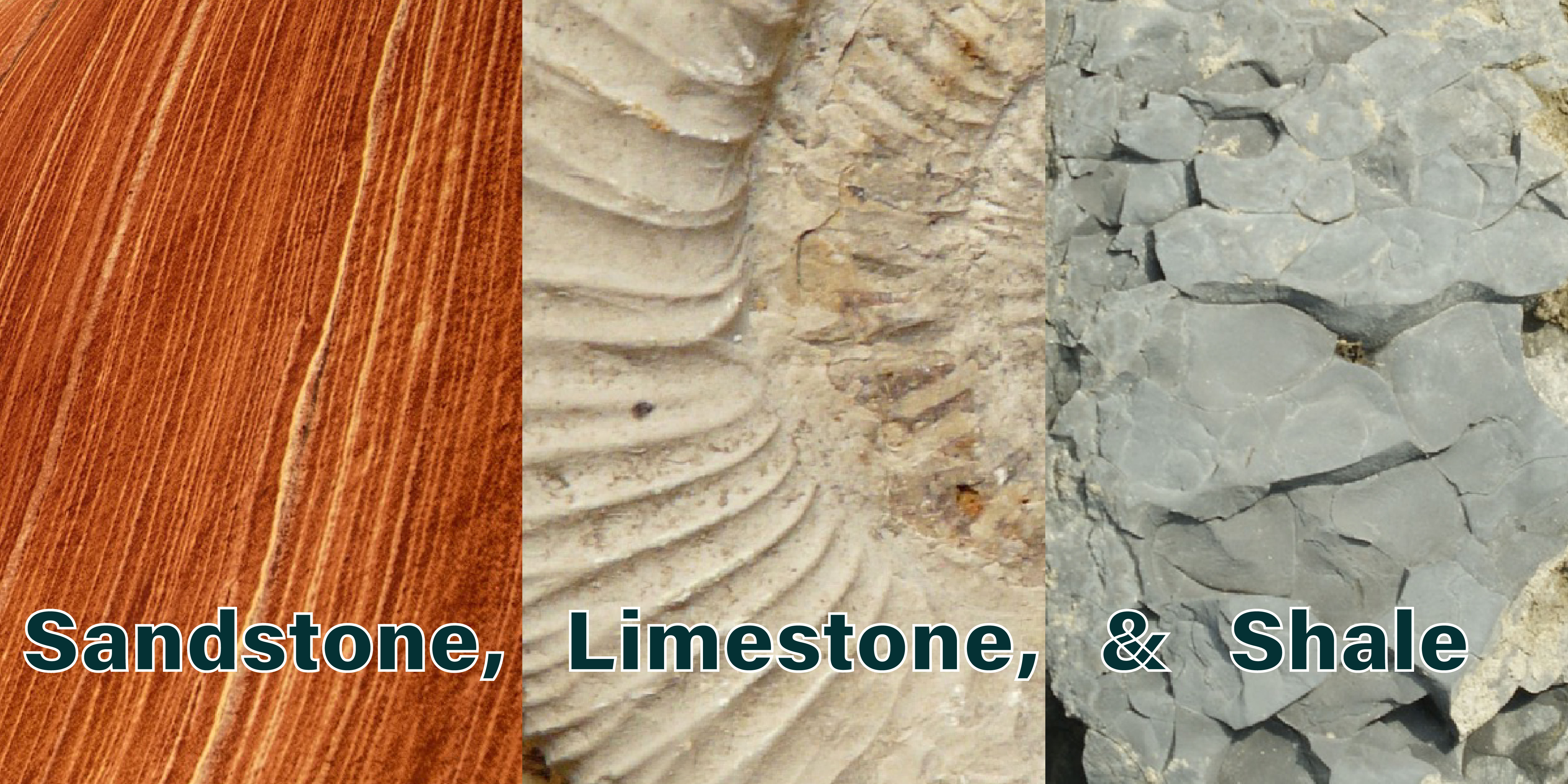Fundy Field Notes - IS IT A FOSSIL?!

By Danielle Serratos on May 2, 2020
Here’s a test- Which of the three rocks in the picture above is a fossil? Got it picked out? Alright, moving on…
Imagine you’re walking along and BAM! you stub your precious toes on a big ol’ hunk of rock that seriously was not there a moment ago. As you stare at that lump with your best ‘Curse your sudden but inevitable betrayal’ look, you realize it looks weird… and not in the ‘We’re all unique’ way weird, but in the ‘Did I just make the find of the century?’ way weird. So, you pick it up (or take a picture!) and stop by (or message!) your natural science museum to ask the local expert if you’ve found the fossil that is going to rewrite the entire evolutionary history of Earth. Sound familiar?
Having answered A LOT of these questions, I can say with a fair amount of certainty that no, your discovery is not going to redefine the way we interpret the world we live on. But that’s ok! If you have managed to find a fossil, you’re already doing better than most people. I mean, what kind of person doesn’t even look at the rocks they’re stepping on?!? *long, suffering sigh*
Presumably you’re here because you actually want to be able to ID a fossil bone in the field, correct? Well here are a few things to keep in mind:
- Texture. If your “fossil” has a bunch of rough surfaces, uneven or asymmetrical shapes, and is made up of different-sized grains, it is probably not a fossil. If it has a spongy looking inside and a solid outer layer it might be a limb bone though!
- Size. If a single “bone” is the size of a house, it is not a fossil. Sure, sauropods were giants but even their largest individual bones were no bigger than Chewbacca. Some animals like Archelon (giant turtle) and Zuul (armored ankylosaur) could be fossilized as one chunk and be roughly the size of a VW Beetle but even then, no where near the size of a house. And don’t come @ me with those tiny homes- those are barely a livable space.
- Rock type. Fossil bones are 99.9999% of the time in a sedimentary rock*. Not in granite. Not in meteorites. Look in sandstone, limestone, shale, etc. The same goes for fossil tracks; these critters were not fire-proof so don’t go looking for footprints in lava rocks.
- Uniformity. Say you think you’ve found a fossil egg… well chances are pretty good if you did, it’s broken. Look closely at the edges of the “shell”. Are they all the same width? Same texture? Same color? Oftentimes iron nodules are mistaken for dinosaur eggs, but they look like rusted out metal and hardly ever have a uniform thickness. Also, if Magneto can throw it around, it’s probably not a fossil bone either.
- The Lick Test. For whatever reason, licking rocks seems to be the go-to solution for at least a third of all geology-related problems… So if you think you’ve found a fossil in the wild, 1) make sure it is not near any modern organic material, 2) look at the color (if it’s a neon color it might be radioactive), and 3) if all else fails, give it a tiny lick. If it sticks to your tongue more than you would have expected, it might be a fossil. Hopefully it’s not a coprolite**.
The other common question I often get when someone brings in a rock or fossil to be identified is the much dreaded “How much is it worth?” line. *even bigger sigh* Look, I understand we all want to luck into finding a vast amount of plutonium in our backyards (for wealth or a DeLorean, either is legit) but asking your local museum expert is not the way to determine something’s price tag. We don’t memorize the current prices of gold and silver, we don’t deal in the black market of selling fossils, and most of us are strongly opposed to selling fossils in the first place. See, if fossils are expensive, that means the wealthy get them for displaying in their homes instead of residing in our labs where we do some really cool science.
Grading time! If you picked Limestone as the rock above that is a fossil, you’d be correct! Those lines are the close-up view of a cast of an ammonite shell.
*Sedimentary rock- a type of rock that is made of rocks, minerals, and/or organic matter that have been broken down to smaller particles (such as sand grains) which are then cemented together with heat and/or pressure.
** Coprolite- fossilized feces/poop
Visit the Fundy Geological Museum to explore the world’s highest tides, Canada’s oldest dinosaurs, & the gorgeous minerals of Nova Scotia! Check out our Facebook, Twitter, & Instagram accounts for behind-the-scenes looks at all the things!
About the author
Danielle Serratos is the Director/Curator of the Fundy Geological Museum in Parrsboro, Nova Scotia. She was born and raised in Texas, married a Californian, gave birth to a South Dakotan and a Nova Scotian. She loves science fiction/fantasy novels, scuba diving, and regularly plays tabletop and video games on the weekends. You can follow her @SilvaraSerratos but she doesn’t post super often so don’t expect to spend a lot of time reading her tweets.